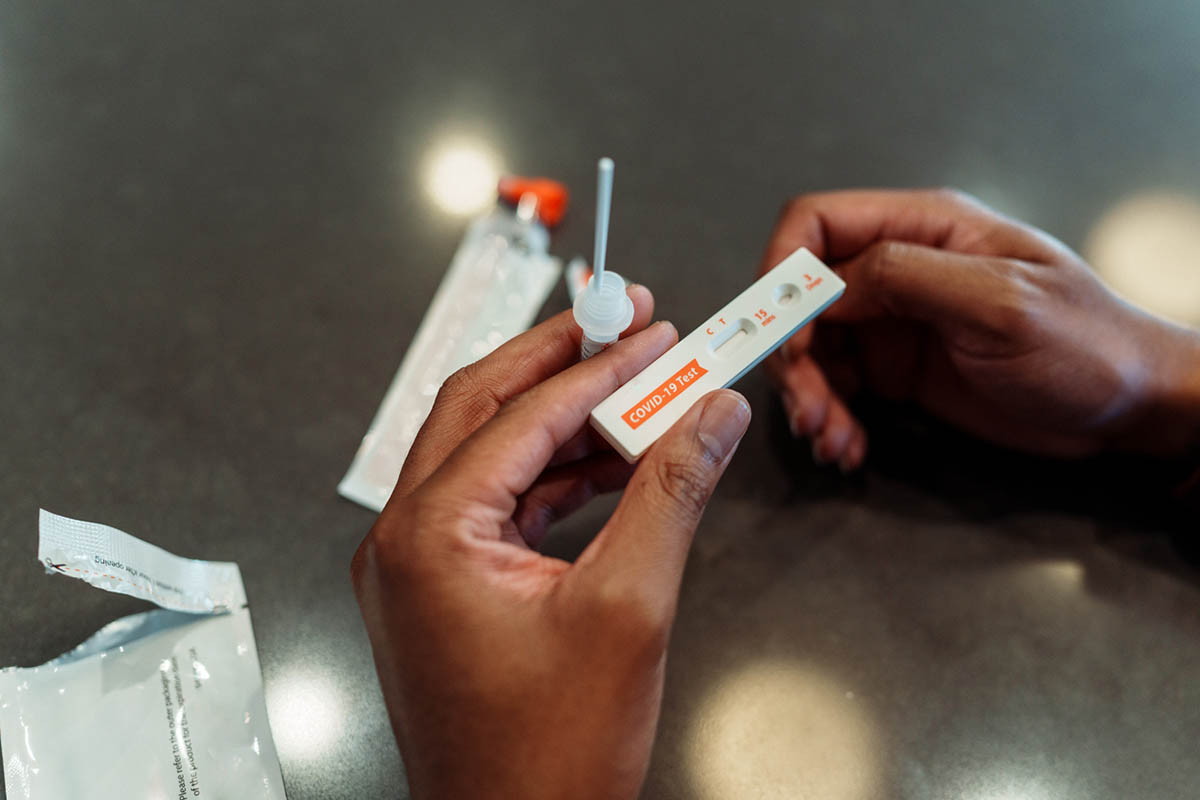
Prim Care Companion CNS Disord 2021;23(6):21cr03120
To cite: Uppalapati S, Karalis P, Cunningham EA. A case of rapid clozapine retitration in a patient with COVID-19 resulting in acute respiratory demise. Prim Care Companion CNS Disord. 2021;23(6):21cr03120.
To share: https://doi.org/10.4088/PCC.21cr03120
© Copyright 2021 Physicians Postgraduate Press, Inc.
aCommunity Health Network Psychiatry Residency Program, Indianapolis, Indiana
*Corresponding author: Swetha Uppalapati, DO, 6950 Hillsdale Court, Indianapolis, IN 46250 ([email protected]).
Clozapine is an effective antipsychotic medication, although it is often underutilized due to its extensive list of adverse effects.1–3 Studies1 demonstrate systemic inflammation can alter serum clozapine levels, requiring careful consideration for coronavirus disease 2019 (COVID-19)–positive patients in whom a strong inflammatory response may occur. Progression of infection can result in acute respiratory distress and potential death.
Case Report
A 68-year-old White man with a history of schizoaffective disorder bipolar type, diabetes mellitus type 2, chronic obstructive pulmonary disease (COPD), and chronic kidney disease who was also a former smoker (quit in 2010) was admitted for acute cystitis and started on nitrofurantoin. On day 2, he developed shortness of breath and was started on azithromycin/steroids for COPD exacerbation. Laboratory tests returned positive for COVID-19, and steroids were switched to dexamethasone. Supplemental oxygen was not required at that time. On day 4, the patient became acutely manic, thought to be worsened from steroids and being off clozapine, which was held upon admission. The psychiatry department was consulted for retitration of clozapine. Outpatient records and baseline clozapine levels were unavailable.
On day 4, the patient was restarted on clozapine 12.5 mg twice/day, which was increased by 50 mg daily until 100 mg on day 6. The patient remained agitated/manic, and titration continued aggressively to 200 mg on day 7, to 300 mg on day 8, and to his previous home dose of 400 mg on day 9. Valproate 500 mg twice/day was started on day 6. Olanzapine as needed was unsuccessfully trialed for agitation and was changed to chlorpromazine as needed on day 9. On days 11–12, the staff noted continued agitation and suicidal thoughts. After checking his valproate levels on day 13, the dose was increased to 1,500 mg daily. Additional medications during admission included budesonide/formoterol, finasteride, tamsulosin, glipizide, insulin glargine, hydrochlorothiazide, lisinopril, metoprolol, hydroxyzine, and simvastatin.
Due to worsening respiratory status, the patient required a nasal cannula. He was unable to receive remdesivir due to inability to maintain intravenous access. At 400 mg of clozapine, the patient developed sialorrhea, and oxygen demands progressed from 2 L nasal cannula to 100% oxygen on nonrebreather. A speech language pathologist was consulted to assess for aspiration. Swallow evaluation demonstrated wet cough with thin and nectar thick liquids, indicative of aspiration. Oxygenation dropped to the mid-80s after trial of honey thick liquids, indicative of silent aspiration. As the patient’s condition worsened, repeat laboratory tests showed increased inflammatory markers, ferritin, and C-reactive protein (CRP). After several days of progressive respiratory failure, the patient was transitioned to comfort measures and died within 24 hours.
Discussion
Studies show severe inflammation can release cytokines inhibiting cytochrome P450 1A2,4 which metabolizes clozapine leading to higher clozapine concentrations. Elevation of CRP is an indicator of inflammation and can proxy serum clozapine level volatility.5 This case demonstrates the need for clozapine titration to be cautiously completed with monitoring of the patient’s CRP and clozapine levels. Development of pneumonia can be lethal in clozapine patients and has been more strongly associated with clozapine compared to other second-generation antipsychotics.5 This is important to consider, as clozapine has increased risk for aspiration, related to hypersalivation and sedation, and aspiration pneumonia.1 COVID-19–related respiratory symptoms, systemic inflammation, and resulting elevated clozapine levels could predispose to aspiration pneumonia.
Although data surrounding clozapine use in COVID-19 remain limited, research indicates that severe infections can raise clozapine levels by a factor of 2 or 3.6 Thereby, one could argue that decreasing the patient’s home dose to one-half or one-third may be necessary, but once signs of inflammation have subsided, the clozapine dose can be retitrated slowly.5
Additionally, clozapine has been associated with withdrawal symptoms when stopped suddenly, including cholinergic rebound and worsening psychosis, which likely precipitated our patient’s presenting agitation/psychosis. Considering the range of adverse side effects associated with clozapine use, the risk/benefit analysis should be carefully considered when continuing clozapine in COVID-19 patients hospitalized with worsening inflammation and respiratory symptoms.5
Received: August 30, 2021.
Published online: December 23, 2021.
Potential conflicts of interest: None.
Funding/support: None.
Previous presentation: Poster presentation at Multidisciplinary Scholarly Activity Symposium (MSAS); May 20, 2021; Indianapolis, Indiana.
Additional information: All patient details have been de-identified to protect anonymity.
References (6)

- de Leon J, Ruan CJ, Verdoux H, et al. Clozapine is strongly associated with the risk of pneumonia and inflammation. Gen Psychiatr. 2020;33(2):e100183. PubMed CrossRef
- Dragoi AM, Radulescu I, Năsui BA, et al. Clozapine: an updated overview of pharmacogenetic biomarkers, risks, and safety-particularities in the context of COVID-19. Brain Sci. 2020;10(11):840. PubMed CrossRef
- Gee S, Gaughran F, MacCabe J, et al. Management of clozapine treatment during the COVID-19 pandemic. Ther Adv Psychopharmacol. 2020;10:2045125320928167. PubMed CrossRef
- Clark SR, Warren NS, Kim G, et al. Elevated clozapine levels associated with infection: a systematic review. Schizophr Res. 2018;192:50–56. PubMed CrossRef
- de Leon J, Ruan CJ, Schoretsanitis G, et al. A rational use of clozapine based on adverse drug reactions, pharmacokinetics, and clinical pharmacopsychology. Psychother Psychosom. 2020;89(4):200–214. PubMed CrossRef
- Ruan CJ, Zang YN, Cheng YH, et al. Around 3% of 1,300 levels were elevated during infections in a retrospective review of 131 Beijing Hospital in-patients with more than 24,000 days of clozapine treatment. Psychother Psychosom. 2020;89(4):255–257. PubMed CrossRef
Please sign in or purchase this PDF for $40.
Save
Cite



